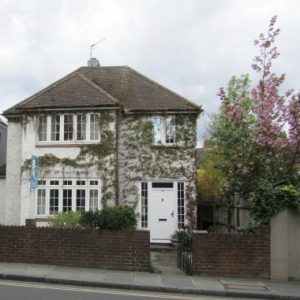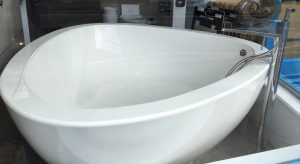Live the future now – age-proof your home
During the Covid – 19 pandemic most of us have been forced to spend more time at home than we are used to. We may be doing virtually everything from home; working, shopping, relaxing, taking up new hobbies, and testing our diplomatic skills if we share our home with others.
If you are now at home for most of each day then lockdown can transport you into the future but without needing the TARDIS (of course, fans of Dr Who may have used the time to build their own). You are getting a preview into later life, when, research suggests, people spend more hours of the day at home, with layout and design having a greater impact on daily life. It is an opportunity to reflect on how well your current home might meet your needs as an older you.
When we decided to make our home age-friendly we had to imagine how different our needs might be in the future and what we should change about our home to make it age-proof. This is a different challenge from adapting a home to cater for a pre-existing disability, where somebody knows which features of their home are limiting their ability to live well. As I set out in another article, we learnt a lot from seeing the challenges faced by our older relatives. We also researched relevant planning guidelines and what is known about the typical ageing process. We thought about day to day life and how our home could improve things for us now and in the future.
A few weeks ago I overheard one half of a couple walking past our house saying ‘I bet lockdown is OK if you live in a house like that’. It got me thinking about aspects of our ‘new’ home that have made a big difference to our day to day lives recently.
Windows and doors
The old house had standard width upvc windows and doors with what I now know are called Georgian Bars (the noughts and crosses effect which were presumably installed to create an ‘authentic’ look to a 1950’s house!) We replaced these with wider windows throughout and full length glass sliding doors at the back of the house (which is North facing). The impact of these changes has been:
- Massive increase in natural light – it has to be very gloomy outside for us to need lights on during the day.
- Clear views into the back garden and out onto the street and front garden. Seeing the greenery and birds makes a big difference to our time indoors.
Efficient artificial light – The old light fittings and task lights meant that 12 different bulb types were being used, so when one failed we had to rummage through our supply and hope we had the right one. We were perplexed by one strip of spotlights in the old kitchen as there appeared to be no switch for them. We later discovered that the previous owner had simply not replaced the three bulbs when they failed and must have prepared meals in semi-darkness rather than search for replacements.
With new efficient lights in the right place, when it is dark outside we can read, cook and work without the need for extra task lights. Over the age of 65 people typically need twice as much light to achieve the same visual acuity as when they were 20, so we should be OK for the future. In the meantime being able to see the food we are preparing is reassuring for us and will be for guests, whenever we are allowed to mingle again.
Heating and insulation
I took part in a telephone survey during a recent cold snap and the interviewer, who was working from home, said he was wrapped in a blanket and had the oven on with its door open to keep warm. This took me back to childhood experiences I have described elsewhere of living in a home with inefficient heating.
The combination of insulated walls and floors and underfloor heating installed during the renovation mean that on the coldest day there are no cold spots or draughts and thermal underwear is not required indoors.



